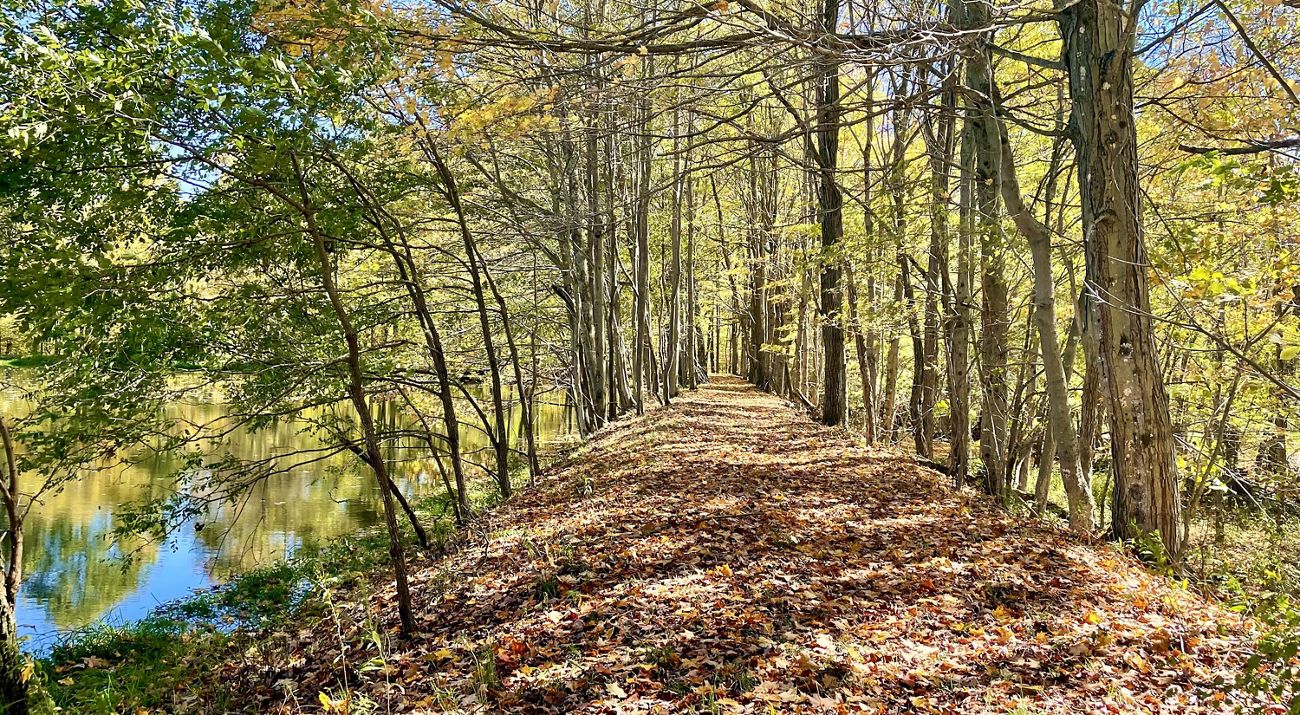The Nature Conservancy in Pennsylvania Adds 1,158 Acres to Protected Lands in the Allegheny Front

Media Contacts
-
Kathleen McFadden
Media Relations Manager
The Nature Conservancy
Phone: 610-368-7108
Email: k.mcfadden@tnc.org
The Nature Conservancy (TNC) in Pennsylvania today announced that it has closed on the purchase of 1,158 acres in Northampton Township, Somerset County, and transferred the parcel to the Pennsylvania Game Commission for addition to State Game Lands 82.
This newly acquired acreage is TNC Pennsylvania’s first land acquisition of this size on the Allegheny Front, a landscape running more than 200 miles across the Central Appalachians. Stretching from the panhandle of eastern West Virginia, north through western Maryland and into central Pennsylvania, the Allegheny Front serves as a vital migration route for countless species adapting to a changing climate.
“The Allegheny Front is one of the most ecologically significant habitats not just in our region but on the world stage. Protecting nature within this vital corridor improves the quality of our air and water, preserves biodiversity, restores our forests, and builds climate resiliency,” said Lori Brennan, Executive Director of The Nature Conservancy in Pennsylvania & Delaware. “We applaud our partners at Open Space Institute, the Pennsylvania Game Commission and the Hamer Foundation for their commitment to keeping this irreplaceable ecosystem connected and thriving for generations to come.”
For more than 400 million years, the Appalachians have served as one of Earth’s most diverse and productive ecosystems. TNC has prioritized conservation across this ancient chain of forested mountains, valleys, wetlands and rivers as a global imperative due to its variety of species, the carbon stored in its forests, and the rich history and stewardship of the landscape.
TNC’s science pinpointed the Allegheny Front as a priority landscape to preserve the rich biodiversity of the larger Appalachian range as climate change drives species to move and adapt. Serving as a habitat bridge between vast conservation lands in the southern and northern Appalachians, the Allegheny Front plays a critical role in keeping this continental ecosystem connected.
This property, known as Brush Creek, supports a diversity of flora and fauna, including white-tailed deer, bear, turkey, cottontail rabbits, ruffed grouse, and American woodcock. It also contains habitat that supports threatened and endangered species, including the federally endangered Indiana bat (Myotis sodalis) and the state threatened small-footed bat (Myotis leibii). Other species of concern in the area include the golden-winged warbler, black-throated green warbler, blue-headed vireos, cerulean warbler, and scarlet tanager. Two high-quality cold-water streams – Brush Creek and Ware Run – flow through the property and are known to foster natural trout reproduction.
The Nature Conservancy’s Brush Creek Property Protection Project was supported through the Open Space Institute’s Appalachian Landscapes Protection Fund, which supports the protection of climate resilient lands for wildlife and communities. The Fund is made possible thanks to major support from the Doris Duke Foundation and additional support from the Richard King Mellon Foundation.
“It was a pleasure for the Open Space Institute to assist TNC and the Pennsylvania Game Commission in protecting these miles along the forested ridgeline of the Allegheny Front, the highest mountain range in Central Pennsylvania,” said Bill Rawlyk, Senior Project Manager at Open Space Institute.
Quote: Bill Rawlyk
This property fills a large, unprotected gap in a critical wildlife migration corridor that extends along these ridges from the Pennsylvania Wilds area into West Virginia.
With its streams, forests, and beautiful scenic views, the conserved land will now support public recreation, and its unique location and habitats can continue to be used by plants and wildlife for movement in response to climate change.”
Funding for this project was also provided by the Hamer Foundation and the Pennsylvania Game Commission.
“This large acquisition, which will be added to State Game Lands 82, offers a very diverse array of habitat types,” said Game Lands Management Group Supervisor Sgt. Travis Anderson. “It provides a lot of different management options to improve and provide quality habitat and hunting opportunities in the area. This collaborative effort to protect wildlife habitat along the Allegheny Front is just one of many we have with The Nature Conservancy. We hope to continue this relationship on future endeavors.”
As part of State Game Lands 82, this property will be open to the public for recreational activities, such as hiking, hunting and fishing. The Greater Allegheny Passage, a 150-mile nonmotorized trail, and the Potomac Heritage National Scenic Trail, a 710-mile National Park Service-managed multiuse trail, are located just six miles south of the property.
The property lies in the Potomac River Basin within the larger Chesapeake Bay Watershed.
In Pennsylvania and Delaware, TNC is leading large-scale conservation programs that protect the lands and waters that are critical to the health and well-being of both people and nature. In Pennsylvania, TNC is also working to reduce stormwater runoff in cities, protect vital migration corridors, and engage farmers and landowners in supporting the adoption of conservation practices. TNC’s work in Delaware focuses on building resilience against climate change, including along the state’s vulnerable coastlines, to protect human communities and habitats.
For more information, visit nature.org/Pennsylvania and nature.org/Delaware.
The Nature Conservancy is a global conservation organization dedicated to conserving the lands and waters on which all life depends. Guided by science, we create innovative, on-the-ground solutions to our world’s toughest challenges so that nature and people can thrive together. We are tackling climate change, conserving lands, waters and oceans at an unprecedented scale, providing food and water sustainably and helping make cities more resilient. The Nature Conservancy is working to make a lasting difference around the world in 83 countries and territories (39 by direct conservation impact and 44 through partners) through a collaborative approach that engages local communities, governments, the private sector, and other partners. To learn more, visit nature.org or follow @nature_press on X.






